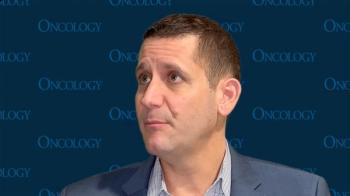
ASCO GU: Surveillance Safe for Small Kidney Tumors in Older Patients
New data suggest that surveillance of patients with small kidney tumors may be a safe alternative to surgery, especially in older patients or those with comorbid conditions.
New data suggest that surveillance of patients with small kidney tumors may be a safe alternative to surgery, especially in older patients or those with comorbid conditions. In fact, data from a large retrospective study that will be presented at the 2013 Genitourinary Cancers Symposium indicated that surveillance may decrease risk for death from any cause, and the occurrence of cardiovascular events.
“Incidence of kidney cancer is on the rise and this is largely believed to be due to imaging for unrelated conditions; therefore, although we don’t screen for kidney cancers, most newly diagnosed kidney cancers are now found at a very small size,” said William C. Huang, MD, assistant professor of urologic oncology at New York University Medical Center, during a press conference. “We also know that kidney cancers at this size represent a heterogeneous group of tumors with a varying malignant potential; therefore, not all of these tumors are necessarily dangerous.”
Small renal masses, typically those smaller than 4 cm, are typically treated with surgery to remove part or the entire kidney. According to Huang, there is emerging evidence that surgery in some cases may be unnecessary, and that it may result in adverse outcomes unrelated to the primary cancer, such as cardiovascular events.
Using SEER cancer registry data linked with Medicare claims, Huang and colleagues examined outcomes of 7,148 patients aged 66 years and older with pathologically confirmed small renal masses diagnosed between 2000 and 2007. Outcomes were examined to determine the effect of surveillance vs surgery on overall survival, kidney cancer-specific survival, and cardiovascular events. Surveillance was defined as having no treatment within the first 6 months after diagnosis.
Of the patients included, 78% were treated with surgery and 22% underwent surveillance, with the percentage of patients who underwent surveillance increasing from 25% in 2000 to 37% in 2007 (P < .001). Patients were followed for a mean of 59 months. During that time, 21% of patients died, including 3% from their primary cancer; 24% of patients had at least one cardiovascular event.
The researchers observed no difference in kidney cancer-related death between patients who underwent surgery vs those who underwent surveillance (HR = 0.66; 95% CI, 0.42–1.02). However, those patients who underwent surveillance had a decreased risk for death from any cause. This lower risk increased with time with a HR of 0.70 from 7 months to 36 months, and a HR of 0.37 at 36 months or longer. In addition, surveillance resulted in a decreased likelihood of having a cardiovascular event (HR = 0.51; 95% CI, 0.44–0.60; P < .00001).
“We believe that surveillance is a reasonable option, particularly for patients that are older or have a reasonable life expectancy,” Huang said. “A small number of small tumors can become lethal over time; therefore, if a patient does have a normal life expectancy, surgery should still remain the treatment of choice.”
When commenting on the importance of the study, moderator, Bruce J. Roth, MD, professor in the divisions of hematology and oncology at Washington University in St. Louis, said that this data may help patients realize that watchful waiting is a reasonable option.
“This is important to show that one does not have a negative impact from an increase in kidney cancer mortality by watching these lesions,” Roth said. “Not intervening not only will not have a negative impact, but it may be a negative impact to do surgery on these individuals because they will have an increase risk of cardiovascular events and maybe cardiovascular mortality.”
The abstract is scheduled to be presented on Saturday February 16 at the meeting.
Newsletter
Stay up to date on recent advances in the multidisciplinary approach to cancer.

















































































